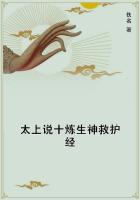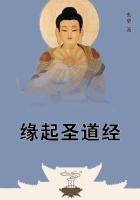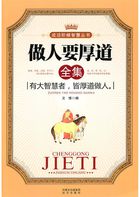It is evident (i) that any and every part of the growing thing has increased, and that similarly in diminution every part has become smaller: also (ii) that a thing grows by the accession, and diminishes by the departure, of something. Hence it must grow by the accession either (a) of something incorporeal or (b) of a body. Now, if (a) it grows by the accession of something incorporeal, there will exist separate a void: but (as we have stated before)' is impossible for a matter of magnitude to exist 'separate'. If, on the other hand (b)it grows by the accession of a body, there will be two bodies-that which grows and that which increases it-in the same place: and this too is impossible.
But neither is it open to us to say that growth or diminution occurs in the way in which e.g. air is generated from water. For, although the volume has then become greater, the change will not be growth, but a coming to-be of the one-viz. of that into which the change is taking place-and a passing-away of the contrasted body. It is not a growth of either. Nothing grows in the process; unless indeed there be something common to both things (to that which is coming-to-be and to that which passed-away), e.g. 'body', and this grows. The water has not grown, nor has the air: but the former has passed-away and the latter has come-to-be, and-if anything has grown-there has been a growth of 'body.' Yet this too is impossible. For our account of growth must preserve the characteristics of that which is growing and diminishing.
And these characteristics are three: (i) any and every part of the growing magnitude is made bigger (e.g. if flesh grows, every particle of the flesh gets bigger), (ii) by the accession of something, and (iii) in such a way that the growing thing is preserved and persists. For whereas a thing does not persist in the processes of unqualified coming-to-be or passing-away, that which grows or 'alters'
persists in its identity through the 'altering' and through the growing or diminishing, though the quality (in 'alteration') and the size (in growth) do not remain the same. Now if the generation of air from water is to be regarded as growth, a thing might grow without the accession (and without the persistence) of anything, and diminish without the departure of anything-and that which grows need not persist. But this characteristic must be preserved: for the growth we are discussing has been assumed to be thus characterized.
One might raise a further difficulty. What is 'that which grows'? Is it that to which something is added? If, e.g. a man grows in his shin, is it the shin which is greater-but not that 'whereby' he grows, viz. not the food? Then why have not both 'grown'? For when A is added to B, both A and B are greater, as when you mix wine with water; for each ingredient is alike increased in volume. Perhaps the explanation is that the substance of the one remains unchanged, but the substance of the other (viz. of the food) does not. For indeed, even in the mixture of wine and water, it is the prevailing ingredient which is said to have increased in volume. We say, e.g. that the wine has increased, because the whole mixture acts as wine but not as water. A similar principle applies also to 'alteration'. Flesh is said to have been 'altered' if, while its character and substance remain, some one of its essential properties, which was not there before, now qualifies it: on the other hand, that 'whereby' it has been 'altered' may have undergone no change, though sometimes it too has been affected. The altering agent, however, and the originative source of the process are in the growing thing and in that which is being 'altered': for the efficient cause is in these. No doubt the food, which has come in, may sometimes expand as well as the body that has consumed it (that is so, e.g. if, after having come in, a food is converted into wind), but when it has undergone this change it has passedaway: and the efficient cause is not in the food.
We have now developed the difficulties sufficiently and must therefore try to find a solution of the problem. Our solution must preserve intact the three characteristics of growth-that the growing thing persists, that it grows by the accession (and diminishes by the departure) of something, and further that every perceptible particle of it has become either larger or smaller. We must recognize also (a) that the growing body is not 'void' and that yet there are not two magnitudes in the same place, and (b) that it does not grow by the accession of something incorporeal.















